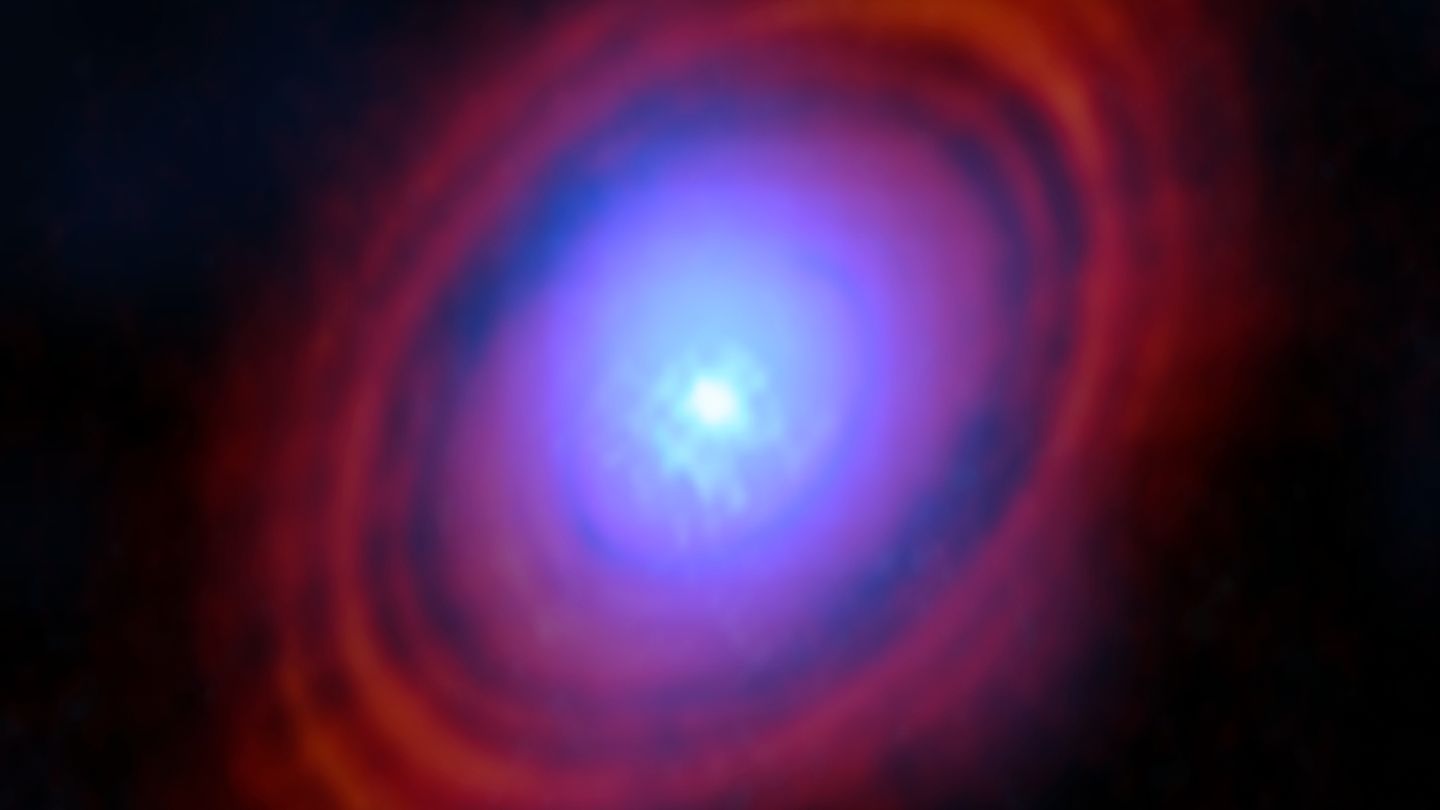Astrobiology Researchers have discovered the element most important for life on exoplanets
© LMA (ESO/NAOJ/NRAO)/S. Facchini et al.
Without water there would be no life on Earth. Astronomers are now finding an explanation for the role this vital molecule plays in the birth of planets.
It's one of the big questions in astronomy and evolution: How did water get to Earth – the element that makes life as we know it possible?
There are several theories about this: it is possible that water rained down on the still young planet along with many meteorites. Another explanation is that it comes from comets, which are structures made of ice, dust and rock that race through space and sometimes cross the orbits of planets. According to a third theory, our Earth and perhaps many other planets have contained water since their formation.
Now scientists have made a surprising discovery that gives new support to this theory: astronomers have discovered that a huge disk of water vapor is moving around the sun-like star HL Tauri, 450 light-years from Earth. It contains three times the amount of water as all of Earth's oceans combined. And: It is located in the HL Tauri region where planets are likely to form.
Exoplanets: Water vapor in the habitable zone
Researchers are sure that the birth of planets takes place in so-called planetary disks. This disk is made of dust, gas and rock and always shows ring-shaped gaps where the forming planet attracts the material like a magnet and thus grows.
Astronomers have long known that water also plays a role in planetary formation. But they have never before been able to determine the distribution of water in a planetary disk.
“I never thought we could capture an image of oceans of water vapor in the same region where the planet was likely to form,” says Stefano Facchini. He is an astronomer at the University of Milan in Italy and led the study published Thursday in the journal Nature Astronomy. This indicates that this water vapor could affect the chemical composition of planets that form in these regions.
“It's really interesting to observe directly how water molecules are released from the icy dust particles in the image,” says Elizabeth Humphreys, an astronomer at the European Southern Observatory (ESO), who was also involved in the study.
A view from the desert to the universe
These dust grains that make up the disk are nuclei Planetary formation. As they orbit the star, they collide and clump together to form larger objects. Scientists say it's cold enough to freeze water on dust particles, making the particles stick together better, an ideal place for a planet to form. “Our results show how the presence of water can influence the evolution of a planetary system, just as it did in our solar system about 4.5 billion years ago,” Facchini adds.
Observing water over such vast distances using a ground-based telescope is no easy task. The Earth's atmosphere itself contains a lot of water vapor, which weakens astronomical signals.
The new findings were made possible thanks to a very special telescope: the Atacama Large Millimeter/submillimeter Array, known as ALMA for short. It is located in the Chilean Atacama Desert at an altitude of about 5,000 metres. In a high, dry environment, there is hardly any water vapor in the atmosphere. Looking into space allows us to look back into Earth's history.

“Total coffee aficionado. Travel buff. Music ninja. Bacon nerd. Beeraholic.”







More Stories
Researchers detect extremely high-energy gamma rays
Anxiety disorders in old age increase the risk of dementia
Researchers are particularly fascinated by these exoplanets.